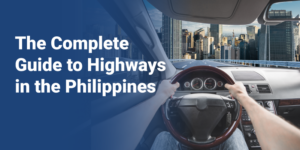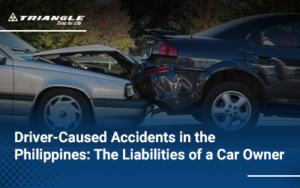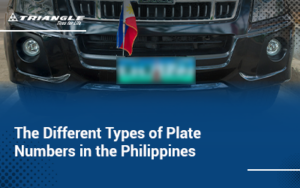The Philippines is home to over 100 million people. With such a large population, public and private vehicle traffic is rampant. Another scenario involves numerous traffic violators, which can be challenging to track.
In 2022 alone, about 3.5 million vehicles traversed Metro Manila’s thoroughfares daily. This density begs the question—how can enforcers stay on top of traffic violations?
To remedy this problem, the Metro Manila Development Authority (MMDA) designed a policy for monitoring and enforcing road laws via the No-Contact Apprehension Policy (NCAP).
Since its implementation and subsequent suspension, NCAP’s pros and cons have been a matter of debate.
What is the MMDA No-Contact Apprehension Policy (NCAP)?
The No Contact Apprehension Policy (NCAP) is a traffic management program implemented by local government units in the Philippines, in partnership with the MMDA & LTO. Designed to reduce road violations through automated monitoring in key areas like Quezon Avenue. Currently, its implementation is suspended due to concerns about enforcement and impact on motorists. NCAP targets violations in the following areas:
- Manila
- Quezon City
- Valenzuela
- Parañaque
- Muntinlupa
NCAP replaces traffic enforcers with digital cameras to capture violators in the act, using photo and video imaging, RFID scans, and plate numbers to identify erring drivers. Authorities can use the footage as proof to fine violators at a later date, streamlining law enforcement. With NCAP, traffic enforcers don’t have to waste time manually serving fines for every violator.
The Supreme Court and LTO suspended NCAP in August 2022 following numerous petitions from motorists and transport groups. However, the rising number of traffic violations poses the question of whether Metro Manila and the rest of the country need NCAP’s return.
6 Pros and Cons of No-Contact Apprehension
The NCAP’s initial implementation and subsequent suspension remain a hot topic among motorists, especially with the anticipation of its potential return. Here are the policy’s pros and cons to help you understand each side.
Pros
1. Mitigates instances of traffic build-up
NCAP eliminates the need for traffic enforcers to pull over motorists and waste time arguing and serving fines. On top of saving time and effort, reduced human intervention minimizes traffic congestion by keeping vehicle flow smoother and safer.
The policy also keeps drivers on their toes. Since there’s a risk that a camera might catch them committing a violation, they’re less likely to drive recklessly and cause accidents, road damage, and congestion. Then, everyone on the road can reach their destinations safer and faster—a level of efficiency that Metro Manila roads desperately need, as some people observe.
2. Drastically decreases road accidents and criminal activity
The thought of a camera constantly watching reduces drivers’ chances of violating road laws. Per the Philippine News Agency, injuries from road accidents in Metro Manila dropped by 47% during NCAP implementation. Likewise, traffic violations fell by 90% and road accidents by 62%.
The policy also reduces extortion and bribery incidents since there are no enforcers to bribe, making road laws fairer for drivers of all financial capacities.
3. Improves protection for government personnel
It’s no secret that being a traffic enforcer is stressful. Almost every day, social media shows drivers arguing with authorities regarding a violation they allegedly did not commit. In some instances, these encounters get out of hand. Others even drive away to evade hefty fines, making law enforcement even more challenging for the authorities.
Removing direct interaction with drivers could lessen the stress or danger for enforcers. Violators also benefit from the setup since they only receive their fines via postal mail and can pay them online, making the process less risky and taxing.
Cons
1. Might take incidents out of context
One of NCAP’s biggest downsides is it operates on the assumption “guilty until proven innocent.” After all, the only proof authorities have of the violation are pictures or videos devoid of context. Some violations might be errors on the camera’s part, while others might have occurred during emergencies.
Emergencies where people’s lives are on the line can be tricky to navigate. Some suggest on-site traffic enforcers should be more lenient in medical situations where one is caught speeding to a hospital on an empty road. Meanwhile, NCAP treats all incidents equally.
These situations prompt supposed violators to appeal their cases since traffic camera footage may not be enough evidence to assess the events. Meanwhile, others might settle for paying the fine instead. Ultimately, these limitations lead many Filipinos to conclude that the NCAP doesn’t benefit them.
2. Lacks clarity regarding who’s implementing
The government units responsible for implementing NCAP aren’t clear. In an article for the Philippine News Agency (PNA), Surigao del Norte Representative Robert Ace Barbers notes that while NCAP is a joint implementation of MMDA and LTO, some cities also enact their version of the NCAP system within their jurisdictions.
This problem raises concerns about overlapping implementation, where violators could receive penalties from both authorities for the same offense.
3. Entails exorbitant fees
Traffic offenders sometimes report receiving enormous fines for minor violations. To protect motorists, Chairman of the House Committee on Ways and Means Joey Salceda filed House Bill 3423 in August 2022. The bill seeks to place penalty caps for NCAP, as excessive fines disadvantage drivers with low economic capabilities.
Prepare for NCAP’s Possible Return
There’s no denying that NCAP is beneficial, creating a safe space where drivers and pedestrians can share roads safely and efficiently. However, with the policy’s suspension closing in on its second year and no end in sight, lawmakers would do well to reflect on its problems and transform it into one that’s fair and equitable for all.
As you prepare for NCAP’s possible return, ensure your vehicle is safe and free from expensive tire repair costs. Triangle Tires’ vast selection of quality tires for any vehicle—from passenger cars to heavy equipment trucks—is available for door-to-door delivery and at affordable prices.
Browse our catalog or contact us today!


